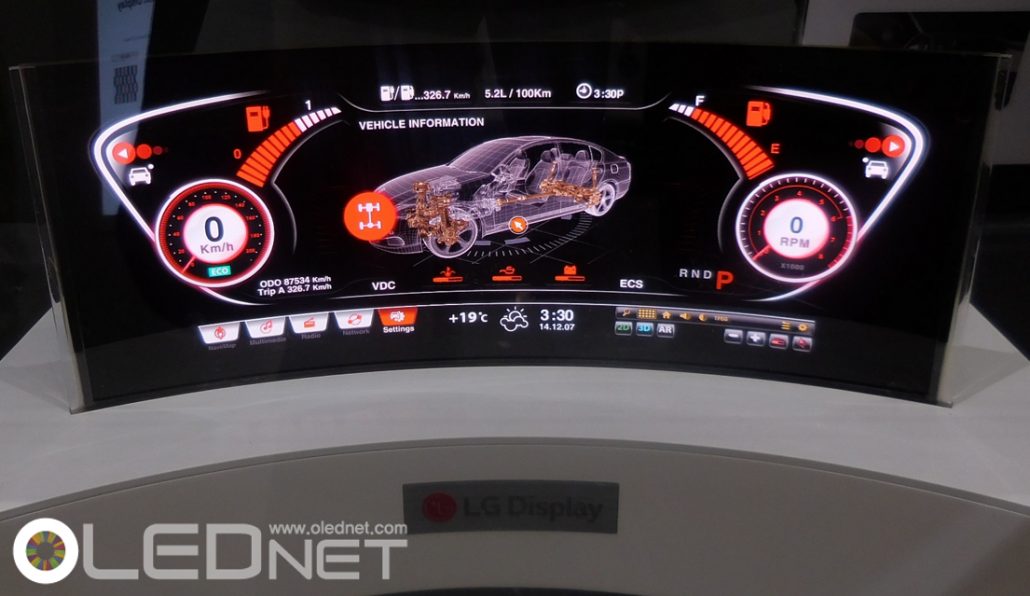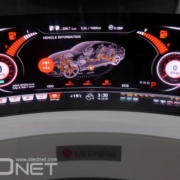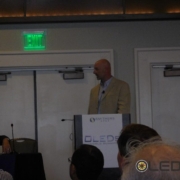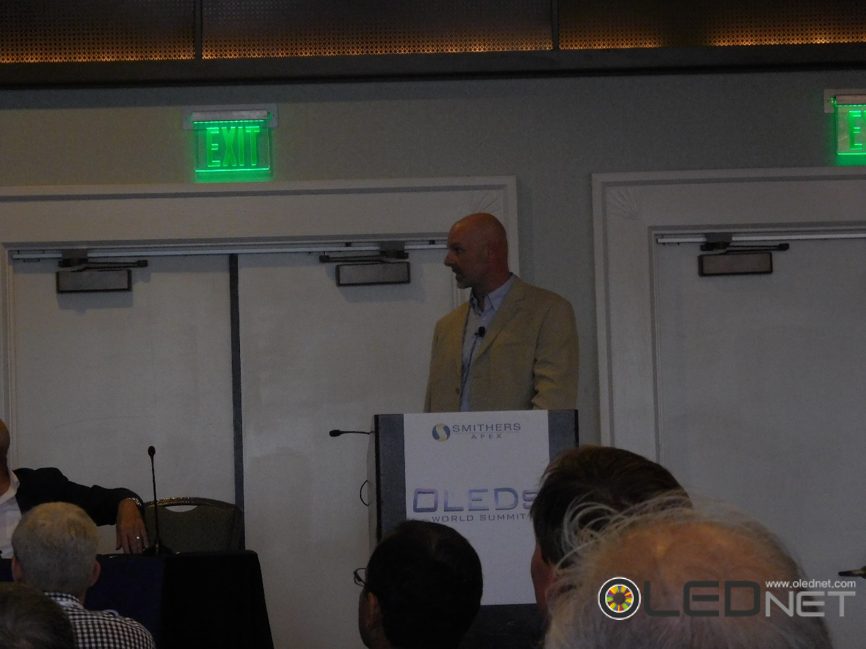Display for automobiles, newly expected revenue sources of OLED
Display market for global automobiles has continued stable growth of approximately 10% yearly recently, and LG Display and Samsung Display do not save investments by paying attention to it as new application. In this regard, Senior Researcher Yang Seong-jin of LG Economic Research Institute lighted up the entry reason of display for automobiles such like creating effects of new revenue are anticipated.
Senior Researcher Yang said “Display market for automobiles has 10% volume of the whole display market and belongs to 2% levels of total cost, but automotive industry has been developed steadily through smart-car and connected-car etc. In contrast, display market has been withered gradually, and panel prices are being lowered continuously, and thus it is directly connecting to survival matters actually.” While stating display market for automobiles as an alternative for this problem, he revealed the reason by saying “The number of participating companies is a few, and average price of display panels for automobiles to which thorough commercialization is required is higher than mobile phone or tablet pc two or three times.”
In display market for automobiles, Innolux and AUO, CPT, Japan display, Sharp occupied about 70% of total market based on 2015 sales of Taiwan, and LG Display recorded 10% share uniquely in domestic, but Samsung Display, second mover, failed in entering ranks. However, LG Display announced a plan that they were planning to enter the market with POLED to which flexible function was available after having designated display for automobiles as a promotion business, and Samsung Display was known to set up a policy of progressing differentiation strategies on display for automobiles based on small& medium OLED technology, so market share is expected to be increased little by little.

<LG Display/Flexible Automotive Display, SID 2015>
In the display market having been stagnated currently, concentration on display market for automobiles would be resultantly necessary for high profits, and OLED panel could get opportunities of creating new revenue sources by overpassing mobile and tablet pc market, if OLED panel solves demanding requirements of display for automobiles.




